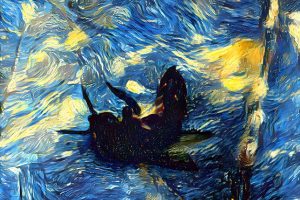By Rowenna Hoskin | Science Editor
The name Galileo is a famous one, not only because Queen referenced him in Bohemian Rhapsody. While the name is famous his history and ingenious inventions are perhaps not as widely known. He was a man of many talents, an astronomer, physicist and philosopher in the 1500s. His inventions laid the groundwork for many objects that have shaped our civilisation:  the compass, the telescope and the theory of a heliocentric solar system. The world in which we live would look very different if Galileo had followed the route of priesthood as he once considered, or even the route of medicine as his father wished. 
GalileoÔÇÖs father made him enrol in medicine at the University of Pisa which kickstarted his scientific career. However, he never actually ended up doing the course, instead he swapped to philosophy and mathematics. After graduating, he became a professor of mathematics and worked on a variety of experiments.┬á
GalileoÔÇÖs mind was incredible, his ingenious allowed him to see things that others had not. For example, he was the first to observe how long it took any object suspended from a rope or chain to swing to and fro. He used his own pulse as a time measurement and he observed that, no matter how big the swings were, the time for each swing to be completed was exactly the same. Galileo had discovered the law of the pendulum which placed him in the position of notoriety within the academic community. This law would later be used to produce clocks, enabling the regulation of them. So every time you look at your watch or the clock on the wall – give Galileo a little thank you.
Another aspect of GalileoÔÇÖs career that placed him in the hall of scientific fame (although did not make him popular at the time), was his disproving of AristotleÔÇÖs theory concerning falling objects. Aristotle believed that heavier objects would fall faster than smaller objects, and was a widely accepted theory – until Galileo dropped a variety of different weighted balls from the Tower of Pisa. He set up a public demonstration and dropped all the balls off the top at the same time to prove that Aristotle was wrong, and wrong he was. The balls all landed at the same time demonstrating that objects of different weights all fall to earth because of gravity at the same time.┬á
In the 1500s, individuals who fell into debt were placed in prison. After his fatherÔÇÖs death, Galileo was left with very little money and his sisterÔÇÖs dowry to pay – in an effort to make some money he began to invent things. One of these inventions was what we now call a thermometer. It used water to float bulbs with varying masses labelled with different temperatures. It allowed the temperature to be measured as the buoyancy of water changes as the temperature changes, making some bulbs sink: the lowest bulb showed the temperature. This invention provided the building blocks for other scientists to create varying forms of the thermometer, until it developed into the thermometers that we use today – of which have been particularly important in taking the temperatures of COVID patients.┬á
Many other aspects of modern life originated or were somehow linked to Galileo, for example the magnet, the compass and even the telescope. 
Originally, Galileo invented a military compass that allowed them to accurately aim cannonballs. He then modified it to allow it to be used for land surveying. Although the invention of google maps and other technological advances, the compass is still used alongside maps with hikers and sailors – after all a compass will never run out of battery.┬á
Magnetism is also a field that Galileo experimented with, using lodestones (made of iron, magnetite and brass) he was able to make a stronger magnet called an ÔÇÿarmed lodestone.ÔÇÖ In the 1600s, many astronomers were basing their explanations on the movements of planets on magnetism. Johannes Kepler believed that the Sun was a magnetic body and that the reason planets for planetary movement was due to the magnetic vortex that the sun created. Although Galileo disagreed, he still spent years experimenting the thesis with magnets.
The telescope had already been invented by a Dutch spectacle-maker when Galileo first heard of the invention, but he made his mark all the same. Without having ever seen the invention, or even having looked at the blueprints, Galileo created his own superior version. The Dutch inventor applied for a patent and the details were kept as a state secret as the invention was considered a military advantage for Holland. Despite this, Galileo invented his own spyglass just from the knowledge that the invention magnified a distant object making it seem closer. Within the space of 24 hours, he created a 3x power telescope, and then subsequently a 10x version. 
Despite all of his magnificent inventions, Galileo was not always a popular scientist. Famously he was imprisoned for his theory that the Earth orbited the sun. At the time, the Catholic church held a lot of power within society and they accused Galileo of heresy. Although scientists had known for centuries that the Earth was not the centre of the universe, the church had decided that it was a matter of scripture and it was illegal to disagree. Galileo was forced to promise that he would not teach heresy from then on and was subsequently placed under house arrest for the remainder of his life. 
It took the church 300 years to accept that the Earth was not the centre of the universe and to clear GalileoÔÇÖs name of heresy. A classic example of the conflict between science and religion.┬á┬á
Galileo was an instrumental scientist in almost all areas of science that we see today. His inventions functioned as the building blocks upon which other scientists could create and improve to produce things we use in everyday life, even now. 








Add Comment